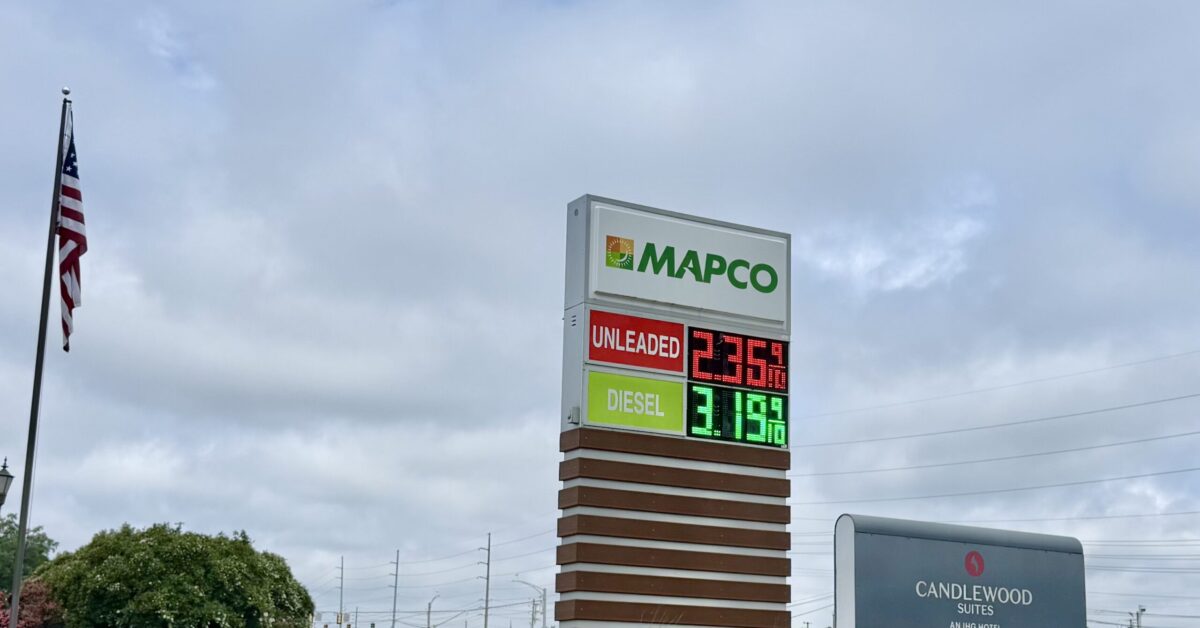See how recycling 15.5M + oyster shells helps restore Alabama’s shores
Reading time: 8 minutes
Sponsored

Can Alabama restore and improve the health of its shores, marshes and seafood industry one oyster shell at a time? Many coastal advocates think so. Here’s how.
Millions of Shells

Alabama Coastal Foundation (ACF) Executive Director Mark Berte has 15,503,000 reasons to be proud of his organization’s oyster shell recycling program. That’s how many shells his group and partner agencies have recycled from local Mobile/Baldwin County restaurants since the program’s inception less than five years ago.
To put that number into perspective, 15.5 million shells:
- Weighs the same as 320 elephants
- Fills 241 dump trucks
- Covers 39 acres of land
Why Oysters and Their Shells Matter

Aside from keeping shells out of the landfill, recycling oyster shells back into their natural habitat helps rebuild reefs and bring back oysters. It also repairs damaged marshes, shorelines and coastal ecosystems.
How is that done?
“The outside of an oyster shell is the favorite place for a new oyster to latch onto,” Berte declared. Bottom line: the more we can put oyster shells strategically in places they can repopulate, the more we build back natural habitats.”
Despite their small size, oysters have a huge impact on our environment. An adult oyster can filter up to 50 gallons of water per day, and they provide habitat for shellfish, fish, crabs and shrimp. Oysters build onto each other, and form little nooks and crannies between each oyster which serve as homes for these critters. Oysters also protect shorelines and marshes from eroding.
“Oysters matter because they are a huge part of our economy, as well as our environment.” stated Berte. “The Mobile Bay watershed drains from most of Alabama, parts of Mississippi, Georgia, even up into Tennessee—we’re talking region wide. Forty percent of our seafood for the entire country comes from the Gulf of Mexico. Whatever helps our environment helps our economy and vice versa.”
Vanishing Reefs

Most of Mobile Bay’s native oyster reefs have vanished over the years because of overharvesting, habitat destruction and pollution.
“We all like to eat oysters, and reefs are where those oysters come from,” Judy Haner with The Nature Conservancy in Alabama told me. “A really interesting thing about Mobile Bay is we had hundreds of acres of oysters historically. These were not little flat oyster reefs. These were three-dimensional reefs all around the bay, really protecting our shoreline — six to 15 feet in height. They were huge.”
In the past, those massive reefs broke down waves of force that crashed the shoreline, preventing erosion from happening.

Because the coast of Alabama doesn’t have rocks, communities didn’t have readily available materials to build roads. As a result, for nearly a century, they turned to using oyster shells for roads.
“Oyster shell was the hard material, the hard substrate that we had to build roads with,” described Haner. “So if you drive from Mobile to New Orleans on Route 90, you’re driving on the oysters from Mobile Bay. We didn’t know what kind of impact it was going to have on our marshes and shorelines. We’ve lost a lot of the building blocks of the reefs, and now we’re working to put them back.”
Like the Everglades

Haner compared Alabama’s oyster reefs to the Everglades.
“In the Everglades, we ditched and drained the swamp, moving water to the east and west coasts so we could farm and build communities, not realizing the impact it would have on south Florida and Florida Bay. Now we’re restoring that water flow. Oyster reefs in Alabama aren’t as big as the Everglades, but with the knowledge we have now, we’re working to restore them.”
The really great thing about Alabama is that we have lots of oyster babies (spat or larvae) in the water. They’re just looking for a solid place to land. Since they don’t have those historic reefs, we have to put that substrate back into the water in the form of recycled oyster shells.”
Citizen Scientists—“Doing Their Part”

What also makes the Oyster Shell Recycling Program unique and successful is its ability to involve the general public at many levels.
Alabama Department of Conservation and Natural Resources staffers Scott Bannon and Jason Herrmann agreed.
“Whether it’s the annual Coastal Cleanup, which organizes 1000s of people to pick up litter in the fall or fish tagging studies, the shell recycling program is an opportunity for the public, consumers and restaurants to ‘do their part.’ We like to use the term citizen scientist, giving people a chance to participate in science,” said Bannon.
One such project is oyster gardening through Auburn University at Little Lagoon in Baldwin County. For example, many of the oysters shells are not just used to harvest oysters. They are used to filter and improve water quality. That’s what oyster gardens do best.
“The goal is to educate people on the benefits of oysters and what they can do for your local water quality. It has been very well-received by the people in that area and with one of the local high schools,” said Herrmann.
Restaurants Stepping Up

You don’t collect 15.5 million shells without a network of restaurants dedicated to oyster shell recycling. It takes a number of people stepping up. In the Mobile area that means an Alabama Coastal Foundation advisory committee consisting of restaurants, state agencies and The Nature Conservancy. You also need the local restaurants. Below is the list of establishments participating in the program.
- Bayside Grill @ The Grand Hotel
- Bluegill Restaurant
- Cobalt, The Restaurant
- Felix’s Fish Camp Restaurant
- Flora-Bama Lounge
- Flora-Bama Ole River Bar
- Flora-Bama Yacht Club

- Grand Weddings @ the Grand Hotel
- Half Shell Oyster House, Mobile
- Original Oyster House, Causeway
- Original Oyster House, Gulf Shores
- Sea-N-Suds Restaurant
- Southern Roots @ The Grand Hotel
- Tacky Jacks in Gulf Shores
- The Lodge at Gulf State Park
- Tin Top Restaurant and Oyster Bar
- Wintzell’s, Downtown Mobile
Expanding Statewide—Can it be Done?

There is definitely an interest to expand oyster shell recycling statewide. One such supporter in Birmingham is George Reis, Owner of Ocean Restaurant and 5 Point Public House Oyster Bar. He sees a need.
“I opened up back in 2002, and back then there were maybe four of us doing oysters. Today it’s grown to where there’s probably 15-20 restaurants in Birmingham doing oysters, maybe more. We’ve got to do something on the back side. We’ve got to do something with all these shells—and that’s recycle them,” said Reis.
ACF Stands Ready

The Alabama Coastal Foundation stands ready to expand what they are doing in Coastal Alabama statewide.
Mark Berte reminds us, it is not easy but they are ready for the challenge. ACF has developed a plan. All they need are partners, volunteers, a place to “cure” the shells (leave them out in the sun for 6 months) and funding.
Imagine, doubling and tripling the number of oyster shells collected in the state of Alabama.
Scott Bannon, Alabama’s Marine Resources Director summed it up best.
“This is a product that is consumed in North Alabama. It is probably going to go to a dumpster, and then go to a landfill. If the shells can go right back to an area, maybe where they started, it can contribute to the future harvests of oysters, other seafood, and help with water quality. It makes the circle.”
Learn how the Alabama Coastal Foundation and all its partners are making the “Oyster Shell Recycling circle.”
Want to Get Involved?

Want to learn more about Oyster Shell Recycling and additional programs like oyster gardening? Visit the following websites and connect with these organizations:
- Alabama Coastal Foundation – Oyster Shell Recycling Page
- The Nature Conservancy in Alabama – Alabama Living Shorelines
- Alabama Department of Conservation and Natural Resources – Outdoor Alabama Story on Recent State Efforts
- Alabama Cooperative Extension Service – Mobile Bay Oyster Gardening Program
Sponsored by:



